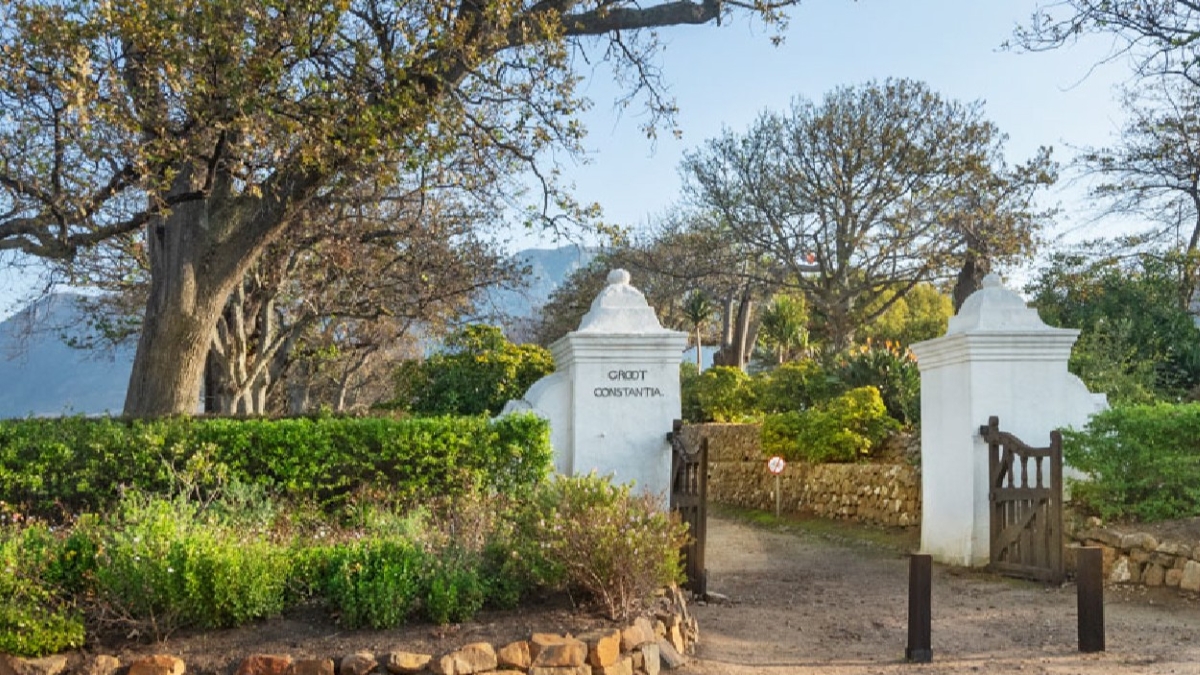Established over 340 years ago, the Groot Constantia farm in Cape Town has been producing wine ever since, earning its first award in 1855.
In 1679, Simon van der Stel, armed with extensive knowledge of viticulture, gained from tending vineyards in Muiderberg in the Netherlands, arrived at the Cape and was appointed Governor that same year.
While in the position, Van der Stel soon found a piece of land, roughly 763 hectares in size, where Constantia is located today, after sending out riders to collect soil samples from nearby areas.
He was granted ownership of the property by High Commissioner Hendrik Adriaan van Rheede tot Drakenstein on 13 July 1685, following the recommendation of Rijckloff van Goens.
It is unclear where the name “Constantia” originated. One theory suggests Van der Stel named it after the Dutch East India Company, which bore the same name, while another claims he named it after Van Goens’s daughter, Constantia.
He immediately began planting grapevines, fruit, and vegetables, as well as raising cattle. Van der Stel retired as Governor in 1699 and passed away in 1712 at the age of 73. Two years later, the farm was subdivided and sold at auction.
Oloff Bergh, a Swedish captain in the VOC, acquired Van der Stel’s buildings on the farm, which later became known as Groot Constantia. Other parcels sold off included the areas that would become Bergvliet and Klein Constantia.
After changing hands several times, Hendrik Cloete eventually purchased the property, which remained in his family for five generations.
Upon acquiring the farm, the Cloete family transformed it, restoring and expanding what previous owners had neglected. One of their first additions was a wine cellar.
This reinvention brought Groot Constantia international recognition — even being mentioned in Jane Austen’s Sense and Sensibility as a cure for a broken heart, according to the farm’s website.
It also claims that Napoleon was given wine from Groot Constantia while exiled on St Helena after his defeat at Waterloo in 1815.
Napoleon was not the only Frenchman to enjoy the estate’s wine — Louis Philippe, King of the French, became its largest buyer in 1833.
The farm won its first award when its wine earned a silver medal at the 1855 Paris Exhibition, followed by another in 1867 and a gold medal in 1878.
Following the death of Hendrik Cloete, his son Jacob took over but struggled financially and was eventually declared insolvent by the Supreme Court of the Cape.
The Cape colonial government subsequently bought the farm at auction for less than a third of its earlier value — a fraction of what had been paid half a century before.
The formation of the trust

The property remained under government control until 1993, when ownership was transferred to the Groot Constantia Trust, a non-profit organisation that protects it as a provincial heritage site.
The trust has between eight and fourteen directors, appointed at Annual General Meetings. “The directors represent a wealth of diverse skills, expertise, and experience, including winemaking, education and heritage, community development, tourism, finance, and legal aspects,” according to the Trust.
The Groot Constantia Trust NPC RF has no shareholders. It is independent, self-reliant, and sustains itself entirely, reinvesting any surplus into the maintenance and operations of the estate.
Today, the farm spans 160 hectares, with 90 hectares under vine, producing approximately 650 tonnes of wine annually.
Its varietals comprise 70% red and 30% white grapes, including Cabernet Sauvignon, Cabernet Franc, Merlot, Shiraz, Pinotage, Muscat de Frontignan, Sauvignon Blanc, Chardonnay, and Semillon.
As was the case over 330 years ago, the farm features nine distinct soil types, allowing the cultivation of optimal clones of each varietal.
Visitors can explore the original Cape Dutch Manor House, enjoy wine tastings, and visit the wine and cultural history museum.
In addition to the vineyards and tasting rooms, the estate hosts two restaurants: Jonkershuis Restaurant and Simon’s Restaurant.
More images of Groot Constantia













You have read 1 out of 5 free articles. Log in or register for unlimited access.


Dining and Cooking